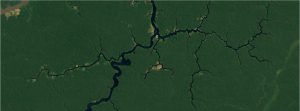
Despite ongoing deforestation, fires, drought-induced die-offs, and insect outbreaks, the world’s tree cover actually increased by 2.24 million square kilometers — an area the size of Texas and Alaska combined — over the past 35 years, finds a paper published in the journal Nature. But the research also confirms large-scale loss of the planet’s most biodiverse ecosystems, especially tropical forests.
The study, led by Xiao-Peng Song and Matthew Hansen of the University of Maryland, is based on analysis of satellite data from 1982 to 2016. The researchers broke land cover into three categories: tall vegetation consisting of trees of at least five meters (16 feet) in height; short vegetation under five meters in height including shrubs, grass, and agricultural crops; and “bare ground”, including urban areas, sand, tundra, and rock. While the classification may seem simplistic, powerful conclusions can be drawn from the data, including assessing agricultural expansion, climate-driven expansion and contraction of ecosystems, and forest clearing and recovery.
“The results of this study reflect a human-dominated Earth system,” the researchers write. “Direct human action on landscapes is found over large areas on every continent, from intensification and extensification of agriculture to increases in forestry and urban land uses, with implications for the maintenance of ecosystem services.”
Overall, the study found that tree cover loss in the tropics was outweighed by tree cover gain in subtropical, temperate, boreal, and polar regions. Tree cover gain is being driven by agricultural abandonment in parts of Europe, Asia, and North America; warming temperatures that are enabling forests to move poleward; and China’s massive-tree planting program. Tree cover is also increasing globally in montane areas.
The biggest gains in tree cover occurred in temperate continental forest (+726,000 square kilometers), boreal coniferous forest (+463,000 square kilometers), subtropical humid forest (+280,000 square kilometers). Russia (+790,000 square kilometers), China (+324,000 square kilometers), and the United States (+301,000 square kilometers) experienced the largest increase in tree cover among countries during the period.
Click here for the full story.
Originally published by Mongabay.




